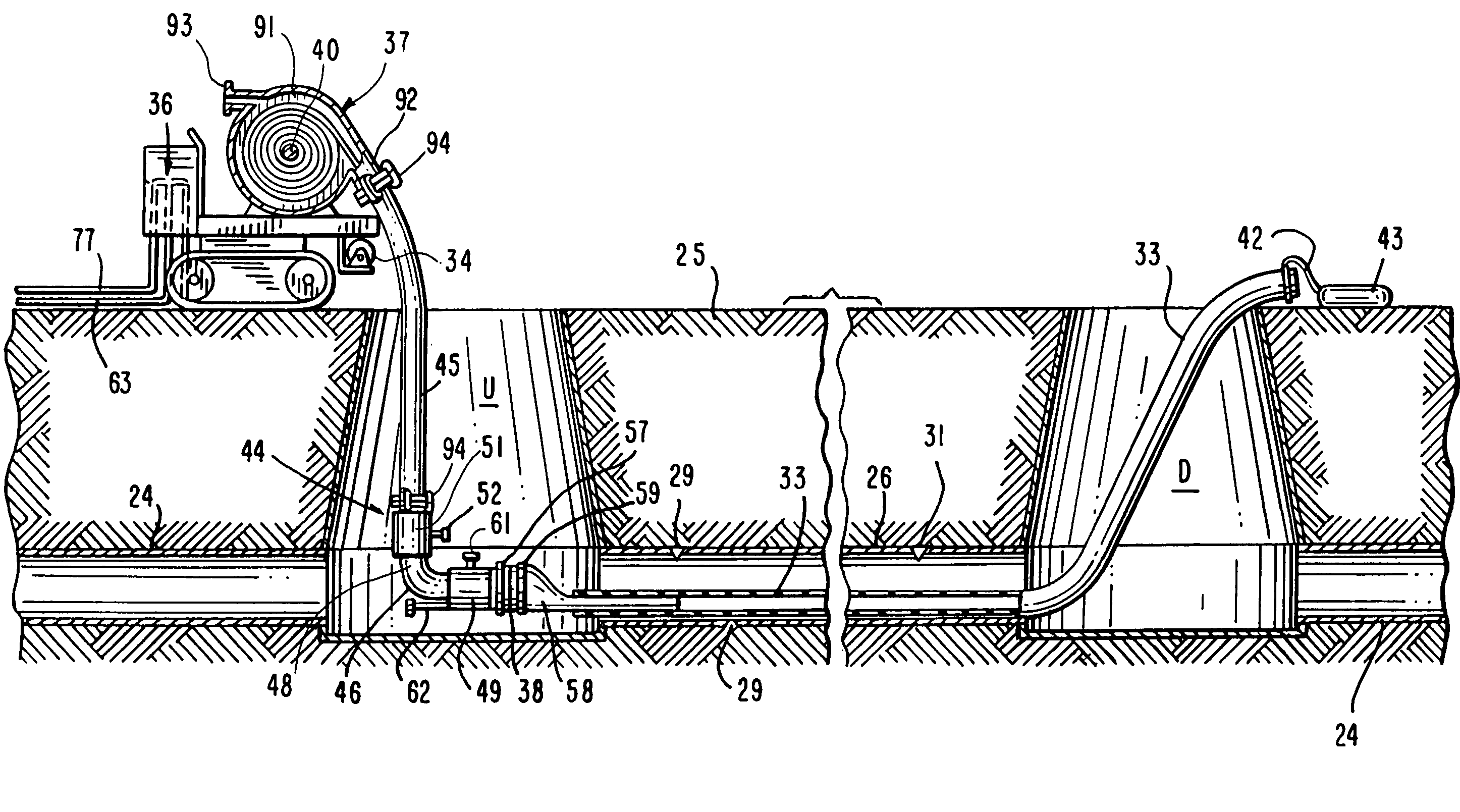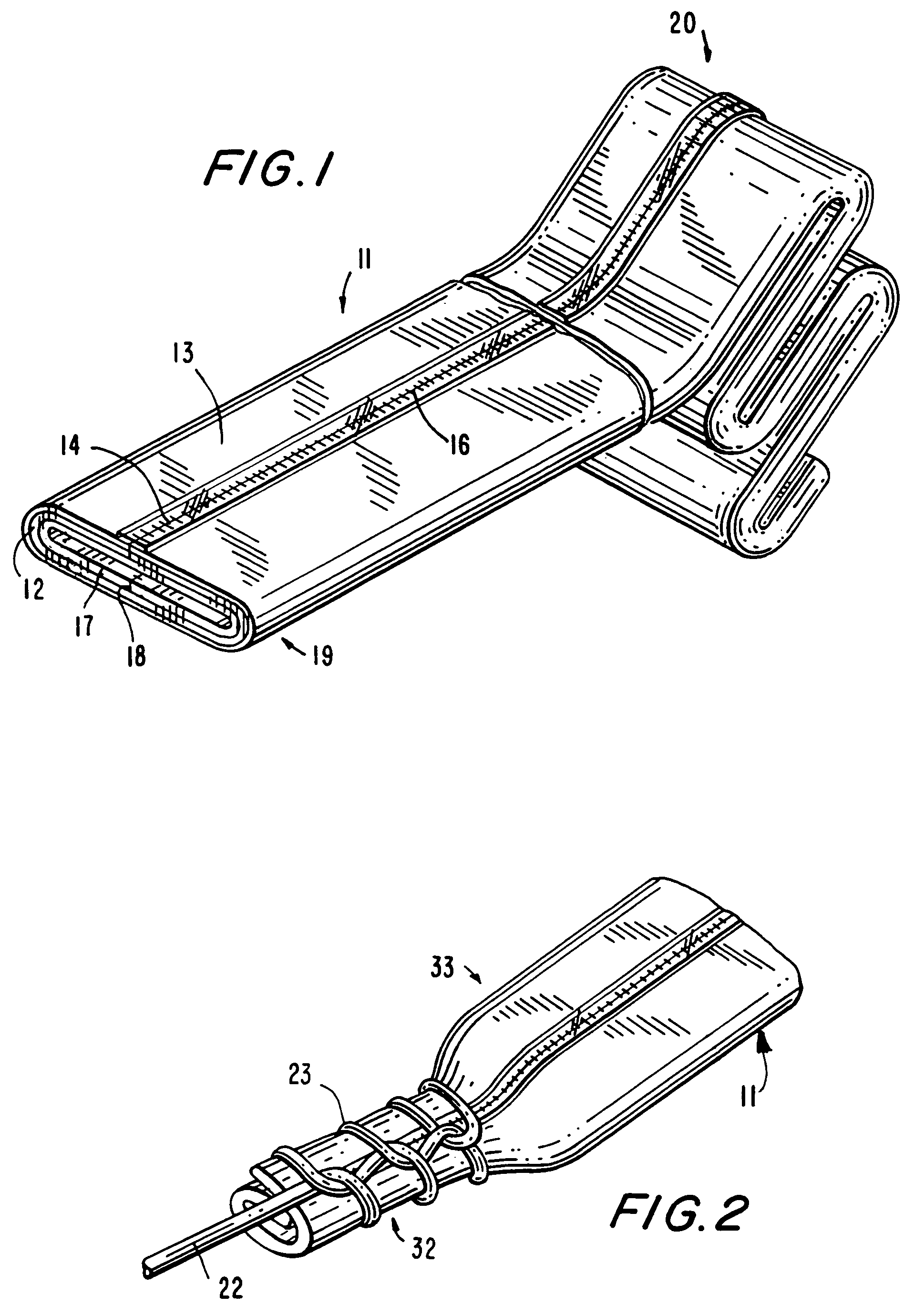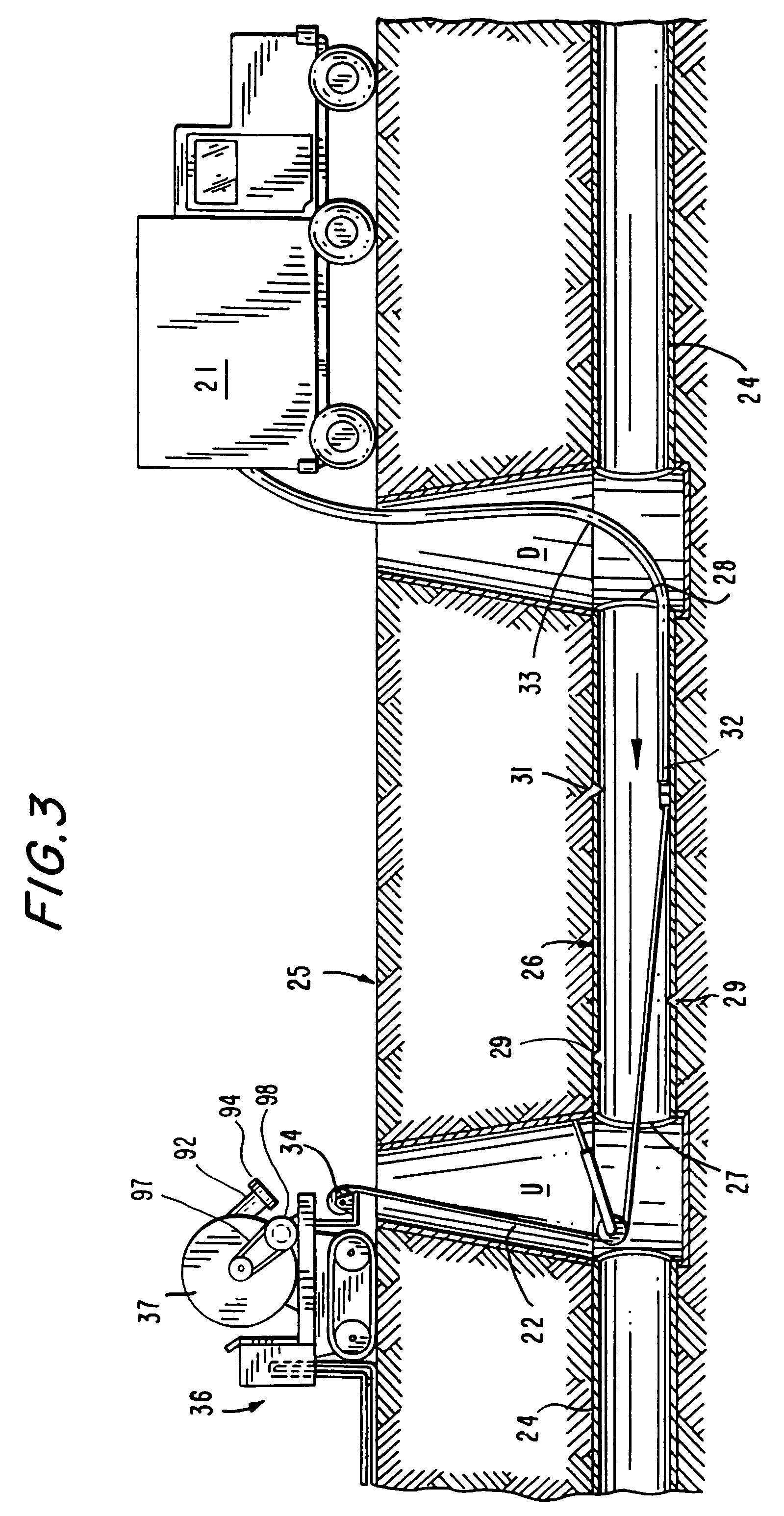Pressurized bladder canister for installation of cured in place pipe
a pressure-filled bladder and pipe technology, applied in the direction of shaft lining, shaft equipment, mechanical equipment, etc., can solve the problems of near the pipe joint, and the deterioration of the pipe itsel
- Summary
- Abstract
- Description
- Claims
- Application Information
AI Technical Summary
Benefits of technology
Problems solved by technology
Method used
Image
Examples
Embodiment Construction
[0037]FIG. 1 illustrates a flexible cured in place liner 11 of the type generally well known in the art. Liner 11 is formed from at least one layer of a flexible resin impregnable material, such as a felt layer 12 having an outer impermeable polymer film layer 13. Felt layer 12 and film layer 13 are stitched along a seam line 14 to form a tubular liner. A compatible thermoplastic film in a form of a tape or extruded material 16 is placed on or extruded over seam line 14 in order to ensure the impermeability of liner 11. In the embodiment illustrated in FIG. 1 and used throughout this description, liner 11 includes an inner second felt layer 17 also stitched along a seam line 18 which is positioned at a point in the tube other than the location of seam line 14 in outer felt layer 12. Liner 11 has a leading end 19 with a continuous length stored in a refrigeration unit 21 (FIG. 3) to suppress early cure of the resin. Liner 11 is cut to a desired length after being pulled into the exis...
PUM
| Property | Measurement | Unit |
|---|---|---|
| Length | aaaaa | aaaaa |
| Pressure | aaaaa | aaaaa |
Abstract
Description
Claims
Application Information
 Login to View More
Login to View More - R&D
- Intellectual Property
- Life Sciences
- Materials
- Tech Scout
- Unparalleled Data Quality
- Higher Quality Content
- 60% Fewer Hallucinations
Browse by: Latest US Patents, China's latest patents, Technical Efficacy Thesaurus, Application Domain, Technology Topic, Popular Technical Reports.
© 2025 PatSnap. All rights reserved.Legal|Privacy policy|Modern Slavery Act Transparency Statement|Sitemap|About US| Contact US: help@patsnap.com



